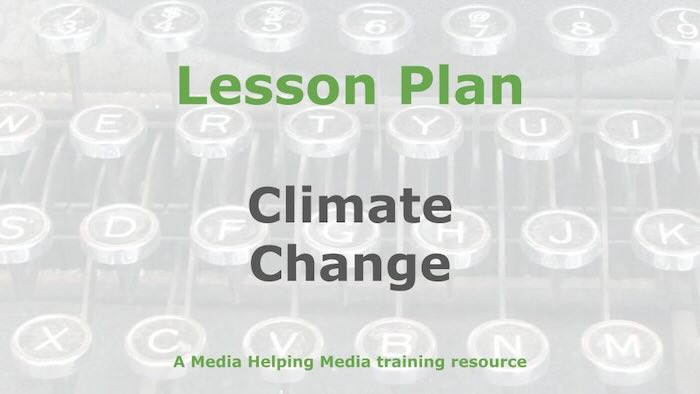
Journalists need to be aware of the danger of providing false equivalence and false balance when covering news stories – particularly regarding the subject of climate change.
The vast majority of scientists agree that climate change is driven by human activities. However there is a small minority of scientists, as well as some politicians and commentators, who disagree with this and demand equal air time in order to get what they feel is fair exposure to their views.
Such views need to be considered alongside the scientific data showing that the Earth’s climate is warming at an unprecedented rate. But journalists need to ensure that they don’t try to ‘balance’ coverage by treating differing views in the global warming debate as having equal credibility and value.
This is about avoiding false false balance, which is when journalists sometimes present an inaccurate or false version of events by trying too hard to ‘balance’ a story or incorrectly treating elements of a story as being roughly equal – or opinions as being of equal value.
The evidence for human contribution:
- Around 99% of climate scientists agree that human activities (anthropogenic) are causing global warming. You can read more about this consensus in studies such as:
- The evidence for rapid climate change includes:
- Global temperatures have risen by about 1.2°C since the late 19th century, with the past decade being the warmest on record. You can find global temperature data and analysis from:
- Atmospheric CO2 levels are at their highest in at least two million years, primarily due to human activities such as burning fossil fuels and deforestation. For CO2 data, see:
- The ocean has absorbed much of the increased heat, warming significantly since 1969. Learn more about ocean warming:
- Ice sheets in Greenland and Antarctica are shrinking, and sea levels are rising at the fastest rate in at least 3,000 years. Information on ice loss and sea level rise:
- Extreme weather events have become more frequent and severe due to climate change. Information on extreme weather:
The anthropogenic greenhouse effect is said to be the primary driver of these changes. Human activities, particularly the emission of greenhouse gases such as CO2, methane, and nitrous oxide, have amplified the natural greenhouse effect, leading to accelerated warming.
While natural climate variability exists, it does not explain the rapid warming observed since the 1950s. The current rate of warming is unprecedented in at least the last 2,000 years, and possibly longer.
Minority views
Those who oppose the scientific consensus on the human influence on climate change, often present several key arguments:
- Natural climate variability: They argue that the Earth’s climate has always naturally fluctuated through cycles of warming and cooling over vast timescales. Therefore, the current warming trend is just another natural variation and not due to human activities.
- Questioning climate models: They often assert that climate models, which scientists use to project future climate scenarios, are unreliable, inaccurate, and prone to error. They argue that these models cannot accurately predict future climate and therefore should not be the basis for policy decisions.
- Disputing the scientific consensus: Some claim there is no real consensus among scientists about the causes of climate change. They often highlight the existence of dissenting scientists.
- Downplaying the severity of the impacts: Some argue that the potential negative impacts of climate change are exaggerated or that there could even be benefits to a warmer climate. They might suggest that plants will thrive with more CO2 or that longer growing seasons will be advantageous.
- Economic concerns: A significant reason for opposition often stems from concerns about the economic costs associated with transitioning away from fossil fuels and implementing climate change mitigation policies. They may argue that these policies will harm the economy, lead to job losses, and lower the standard of living.
- Ideological and political factors: For some there is a distrust of government regulation, a commitment to free-market principles without intervention, or a rejection of environmentalism. It can also be tied to political affiliations and identity.
- Alternative theories: Some promote theories, suggesting that climate change is a hoax created by scientists, governments, or other groups to advance a particular agenda. They often offer data to support their claims.
Focusing on facts:
Journalists need to be careful to ensure they maintain fairness while also ensuring accuracy and clarity when covering climate change. Dissenting voices should be heard, the issue is in what proportion.
Conclusion:
The scientific community’s near-unanimous agreement on anthropogenic climate change is simply not a matter of opinion but a reflection of decades of peer-reviewed research. This consensus is supported by a vast body of evidence, including temperature records, atmospheric data, ice core analyses, and climate modelling. But it is important that the public hears and understands the perspectives of those who disagree with the science so that the audience has the necessary information to make educated choices.
Lesson plan for trainers
If you are a trainer of journalists we have a free lesson plan: Climate Change which you are welcome to download and adapt for your own purposes.









